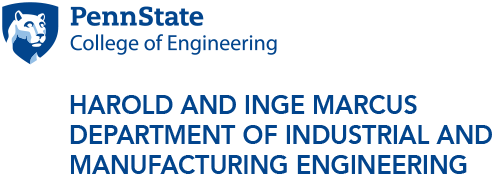
Scarlett Miller, associate professor of engineering design and industrial engineering, and a team of researchers are trying to create a unified, cross-disciplinary system to measure creative ideas.
NSF grant supports research to define creativity in engineering design
10/2/2017
UNIVERSITY PARK, Pa. — In order to successfully solve problems, engineers must be creative. An inventive mindset is essential for them to design new products and services or improve upon those that have already been created. Engineers need to constantly innovate in order to continue to drive economic and societal successes. But, how can creativity be measured objectively? Researchers at Penn State and the University of Maryland will use a $399,999 grant from the National Science Foundation to evaluate how creative ideas in engineering design are gauged, in order to create a unified measurement system.
Scarlett Miller, associate professor of engineering design and industrial engineering at Penn State, is the principal investigator (PI) of the two-year project, titled “Finding the [Ground] Truth: Improving the Validity and Reliability of Creativity Rating in Engineering Design.” Sam Hunter, associate professor of psychology at Penn State, serves as a co-PI on the project. Mark Fuge, assistant professor of mechanical engineering at the University of Maryland, also serves as a co-PI on the project.
Together, the three will work to develop a cohesive statistical framework for creativity metrics that includes a standardized methodology for comparing accuracy and precision of these metrics. Miller and Hunter will lead the creativity ratings and user studies aspects of the project at Penn State, while Fuge will lead the mathematical modeling and validation phases at the University of Maryland.
“One of the things that’s really important in engineering is to be creative and to come up with really creative ideas. Something that has perplexed the research community is coming up with methods to improve student and industry professionals’ creativity,” Miller said. “One of the ways we need to do that is to have an effective way of measuring creativity.”
To accomplish this, the team’s research will provide various design disciplines with unified ways to identify and compare creativity.
Due to its capability to drive innovation, the research also has the ability to help stimulate economic success and growth. Miller said the impact of this could be tremendous, as the standards will be applicable for a wide array of design-oriented disciplines.
Currently, a lack of consistency in engineering and other design-focused industries makes defining creativity across disciplines difficult and often, nearly impossible. Differing criteria and metrics are problematic, as defined by research completed by Miller and other experts. Results of this research show that when different metrics are used to rate an engineering solution, creative rankings for the solution can vary greatly. They may even have a negative correlation. This can cause results of a study to completely contradict previous results from the same study or a similar study.
Miller said though creativity is often only associated with artistic creativity like painting, drawing, writing or musical composition, creativity is at the center of every engineering discipline.
“Creativity is a vital part of engineering and you can’t have an engineer without someone who’s creative,” Miller said. “Creativity is the way that we look at, approach and solve problems to come up with solutions.”
Currently, the social sciences tend to subjectively measure creativity through the consensual assessment technique. They define a creative idea or project as something that experts in the idea or project’s focus area independently agree is creative. In contrast, engineering design creativity research focuses on the measurable aspects of an idea by breaking down the concept into its different components and measuring their creativity in various ways.
Because of this inconsistency, Miller, Hunter and Fuge intend to find an objective and reliable way to neutrally assess creative ideas and projects across disciplines. The data collected will be open-source and available to other researchers via an online repository for further testing and verification.
“We need to discover what the ground truth is when it comes to how we measure creativity and how to come up with more effective metrics for the future,” Miller said. “We have to do this because it is such a vital component of what we do that someone has to figure out the best way of measuring creativity across disciplines because everything we do relies on it."



